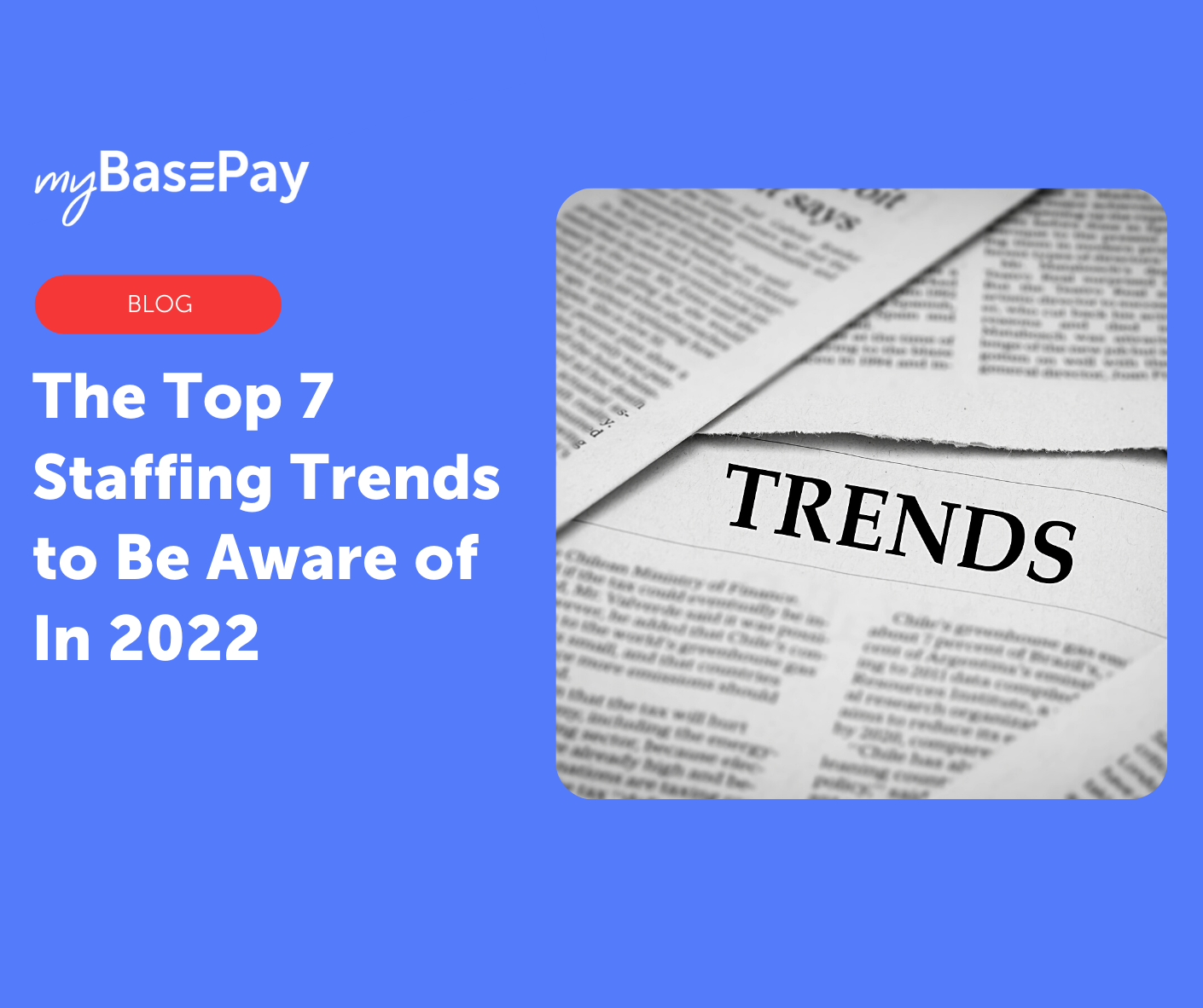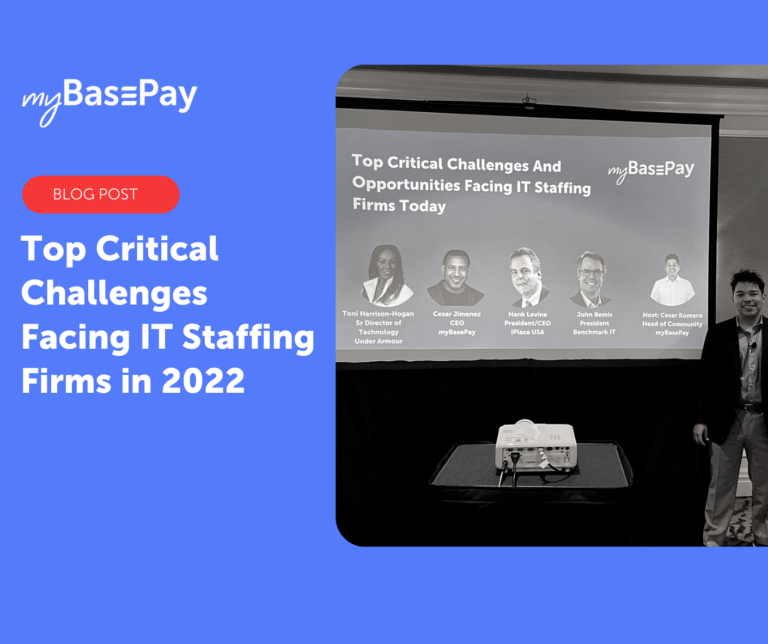The Top 7 Staffing Trends to Be Aware of In 2022
As trends like direct sourcing illustrate, the staffing industry is undergoing a period of significant change. The rise of the contingent workforce, ever-changing technology and the lingering effects of the COVID-19 pandemic are continuing to alter the way that staffing suppliers do business.
By understanding the current trends that are shaping the staffing industry in 2022, both staffing firms and those who use their services can be better equipped to navigate today’s turbulent environment.
-
The Great Resignation
The Great Resignation has been one of the leading staffing news stories since the end of 2021. While some have tried to portray this as a sign of entitled younger generations not being willing to work, the Staffing Trends 2022 report from Staffing Industry Analysts paints a different picture.
Their data reveals that resignation rates are highest among “mid-career employees” between the ages of 30 and 45 who are looking for better jobs, rather than leave the workforce entirely.
Sectors that experienced the greatest demand or disruption due to the COVID-19 pandemic, such as healthcare and hospitality are also seeing high resignation rates. With quit rates and job opening rates continuing to outpace hiring rates, employers must consider how to create a more desirable work environment to attract and retain top talent.
-
Changing COVID-19 Requirements
As has already been alluded to, the COVID-19 pandemic is continuing to have a profound impact on the hiring world. The Staffing Trends 2022 report notes that 57 percent of businesses either already require that workers be vaccinated against COVID-19, or that they plan to implement a vaccination requirement. This is in addition to government mandates affecting specific job sectors — and sometimes even entire populations — in various countries around the world.
With more employers requiring COVID-19 vaccinations, negative tests of unvaccinated employees or other measure to mitigate the pandemic, staffing firms must be vigilant to ensure that candidates are screened appropriately — and that they are aware of an employer’s COVID-related requirements during the application process.
-
Inflationary Impacts
Many businesses have relied on contingent workers as a way to reduce expenses in comparison to hiring full-time employees. However, several market pressures are combining to force staffing firms to raise their rates, increasing the cost of using contingent workers.
As the Staffing Trends 2022 report reveals, the United States is expected to face an inflation rate of 4.78 percent in 2022, building off an inflation-fueled 2021. This combines with increased pressure on the talent supply, which creates a tighter job market that increases the cost per applicant for each job listing.
Finally, tax hikes, minimum wage increases, and the costs of navigating COVID-19 requirements all raise expenses for staffing firms, which are likely to be passed on to their clients.
-
More Mergers and Acquisitions
Once again, the COVID-19 pandemic plays a role in another trend that began in 2021 and is expected to continue in 2022: mergers and acquisitions. Though mergers and acquisitions were on the rise prior to the COVID-19 pandemic, the Staffing Trends 2022 report reveals that 2021 saw a record-breaking 352 transactions in the staffing space.
This is largely the result of two trends: the diverse impact of the pandemic on different staffing sectors, and the industry’s increasing desire to invest in technology. Mergers to gain access to talent acquisition technology are key for giving firms across all staffing sectors the versatility they need to compete in an increasingly competitive marketplace.
At the same time, firms that have been weakened by the pandemic are increasingly likely to be absorbed by businesses that are currently in a place of strength.
-
Increased Cybersecurity Concerns
While increased use of technology is designed to make staffing more streamlined and effective, it also brings greater risk of cyber attacks. This is especially true when one considers that staffing firms house a variety of sensitive data, such as addresses and bank account information.
This is particularly true of firms with remote workforces.
As cited in the Staffing Trends 2022 report, a single cyberattack of a staffing agency in Singapore resulted in over 40,000 job candidates having their data leaked online. To prevent such incidents, staffing firms must invest in more robust cybersecurity, while also implementing control policies that prevent malicious behavior from insiders. Many firms could also benefit from using cyber insurance.
-
AI Deployment
The implementation of artificial intelligence is another area that brings both potential advantages and risks to the staffing industry. Currently, AI’s tested uses are relatively limited, such as implementing algorithms to target job postings to certain groups or to gather information from application forms. AI can even be used to run background checks.
Despite these potential benefits, the Staffing Trends 2022 report warns of gaps between employment law and the potential ethical pitfalls of AI. Data and algorithms are also prone to bias that can leave hiring firms vulnerable to legal action. As AI becomes more widely used, it should not be surprising to see early adopters experiencing setbacks from unproven applications of the technology.
-
Growth of the Italian and Spanish Markets
For staffing firms with interest in Europe, the growth of the Italian and Spanish markets is well worth considering. According to the Staffing Trends 2022 report, Italy and Spain experienced 22 percent and 20 percent growth, respectively, in 2021. Their staffing markets are expected to grow an additional 15 percent and 14 percent in 2022, still placing them well ahead of other European markets.
With improving structural growth, both countries are showing significant prospects for generating lasting return. Though they are less mature than the larger British, German and French markets, they represent a potentially lucrative area of focus for internationally engaged staffing firms.
What Does Your 2022 Have In Store?
While there is no way to perfectly predict the future, the latest information from Staffing Industry Analysts offers clear insights into the trends that are already affecting the way we do business in 2022. Forward-thinking businesses that account for these market changes will be the best positioned to succeed in the year ahead.
At MyBasePay, we are committed to staying up to date on the many issues affecting the staffing industry to ensure excellent results for our clients, no matter what 2022 might bring.
Author: Cesar Romero
Cesar is the Head of Marketing at myBasePay, where he’s responsible for overseeing the company’s content marketing, community, and partnerships strategy. He also co-hosts The Ivy Podcast where he interviews executives from Fortune 500 companies on executive leadership. When he’s not helping startups with marketing and community strategy, you can find him paying it forward by serving as a mentor for leading organizations like StartingBloc, Hive, and Global Citizen Year.






